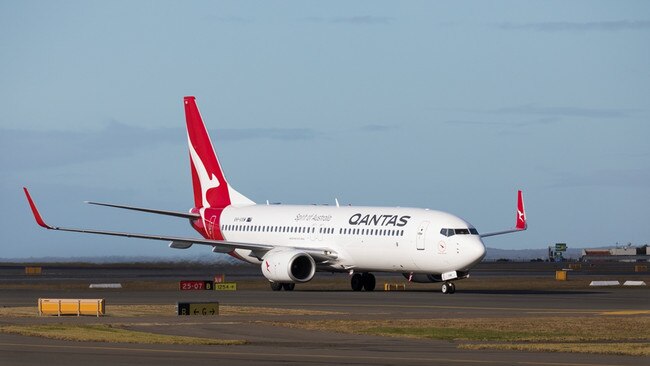Complex repair job slows progress on cracked pickle forks
Pickle fork repairs on Qantas’s Boeing 737-800s are taking longer than expected, with each replacement taking 3000 man hours.

The hairline cracks in the Boeing 737-800s were identified in late October after the problem was found in another airline’s 737s while undergoing maintenance in China.
That prompted a directive from the Federal Aviation Administration ordering all Boeing 737 NGs with more than 30,000 landings on the clock to undergo inspections immediately and those with 22,600 landings to be inspected within the next 1000 flights.
The FAA warned that if not addressed, the cracks “could adversely affect the structural integrity of the aeroplane and result in loss of control”.
Pickle forks help secure the wings to the main body of the aircraft and are meant to last the lifetime of the aeroplane or about 90,000 landings.
Qantas and Virgin Australia took the precaution of doing the inspections straight away and Qantas found three 737-800s with an average of 23,000 landings were affected.
All were grounded while Qantas engineers travelled to the US to learn how to repair pickle forks.
A Qantas spokesman said about 12 of their engineers were now trained to undertake the repairs, with each pickle fork replacement taking about 3000 man hours.
“Qantas Engineering is now one of a small handful of registered organisations who are able to complete these complex repairs,” said the spokesman.
“The works are being completed at Qantas’ heavy engineering base in Brisbane with the assistance of Boeing engineers.”
He said work was “well underway” on the first pickle fork replacement and the 737-800 was expected to be back in service before the busy Christmas period.
“Due to other engineering requirements and the length of time taken to complete the works, Qantas expects the remaining two aircraft to be back in service before the end of January next year,” the spokesman said.
Boeing 737-800s are the workhorse of the Qantas fleet, with 75 of the aircraft operating on mostly domestic routes.
Of those, 33 were inspected for the pickle fork cracks in October and early November.
Virgin Australia checked 19 of its 74 Boeing 737-800s with no issues found.
Qantas had hoped to have the three affected aeroplanes back in service by the end of year but the spokesman said there would not be any impact on schedules, with two remaining grounded.
“The maintenance plan has been built into the schedule so it’s been accommodated for, and there’s a lot less corporate and government travel at this time of year,” he said.
An updated FAA airworthiness directive (AD) warning of cracks in an area adjacent to the pickle forks would be addressed within the recommended inspection time frame.
“We will complete these checks as required,” he said.




One of three Qantas aircraft grounded with cracked pickle forks will be back in the air by Christmas but the other two will remain out of action until late January due the complexity of the repairs required.